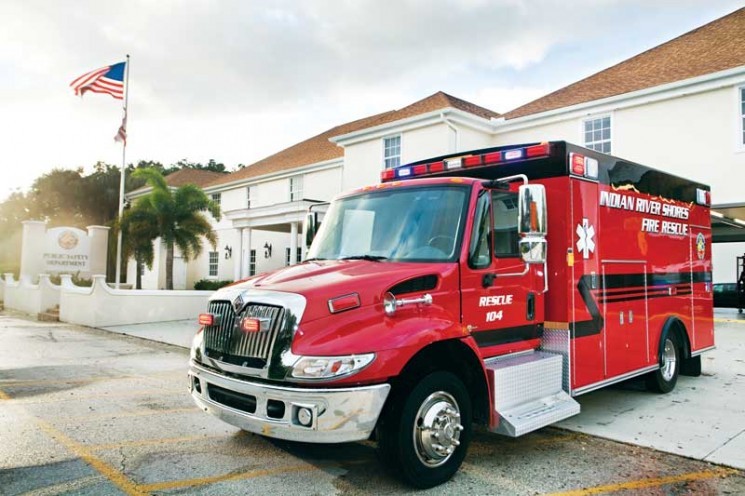
INDIAN RIVER SHORES — Efficiency consultants will not be paid tens of thousands of dollars to pick apart the Indian River Shores Public Safety Department because a majority of the Town Council says the service is well worth the cost.
Indian River Shores is set to spend $2.95 million this year on its police, fire and emergency medical service – roughly $750 per resident of the town – for the equipment and the 24 people needed to run the department.
Councilman Dick Haverland, who has consistently examined the town’s finances and pension liabilities with a skeptical eye since being elected in 2011, looked into hiring an expert to examine the way the Public Safety Department is structured and managed.
He found two such consulting firms who would charge somewhere between $27,000 and $50,000 to do such a study.
“Being triple trained, it’s a very unique operation and a very expensive operation,” Haverland said. “Somebody ought to look at the organization and give us confidence that it’s the best way to operate.”
Public safety accounts for 81 percent of the town’s total $6 million operating budget, $4.9 million of which is funded via property taxes from the town’s 3,967 residents.
By comparison, Vero Beach spends $6.8 million for its police department and only collects $4.1 million in property taxes from its 15,500 residents, with nearly $8 million in revenue from the city’s electric, water and sewer customers funding the bulk of law enforcement and other municipal expenditures.
The Vero Beach Police Department employs 74 people, about three times the Shores’ public safety payroll, but the Shores’ public safety staff also handles fire and medical calls.
Vero residents pay the county for fire rescue services through a tax to the Emergency Services District on their annual property tax bills, while Shores residents do not pay that tax.
Based on his desire to know whether or not the current triple-certified public safety structure and staffing levels are the best value for the town, Haverland made a motion to direct Town Manager Robbie Stabe, who is also the former chief of public safety, to bring proposals to the council for an efficiency study.
Councilman Tom Slater seconded Haverland’s motion, but after discussion, the measure was voted down 2-3.
Councilman Tom Cadden, a third-term official who served as mayor for a decade, put up the staunchest resistance to any potential disruption of the public safety operation.
“You have an excellent, well-trained public safety department,” Cadden said, calling the idea “very, very foolish. I promised a lot of people in John’s Island who elected me that we would not change the system. The town exists for public safety.”
Slater emphasized that residents are “very satisfied” with the service, yet he sided with having more information to make management decisions, “I think Mr. Haverland raises the question of ‘can we be better?’”
Vice Mayor Jerry Weick said he had no interest in making cuts. “In my personal opinion, we’re understaffed.”
Mayor Brian Barefoot cautioned the study could come back recommending a more robust staff.
“Should the consultant come forward and say we’re understaffed, we’d be hard pressed to do that,” he said.
Even without an efficiency study, public safety expenses are down 25 percent from 2011-12 when the town spent just more than $4 million on police, fire and EMS services, due to proactive management of the department’s finances.



